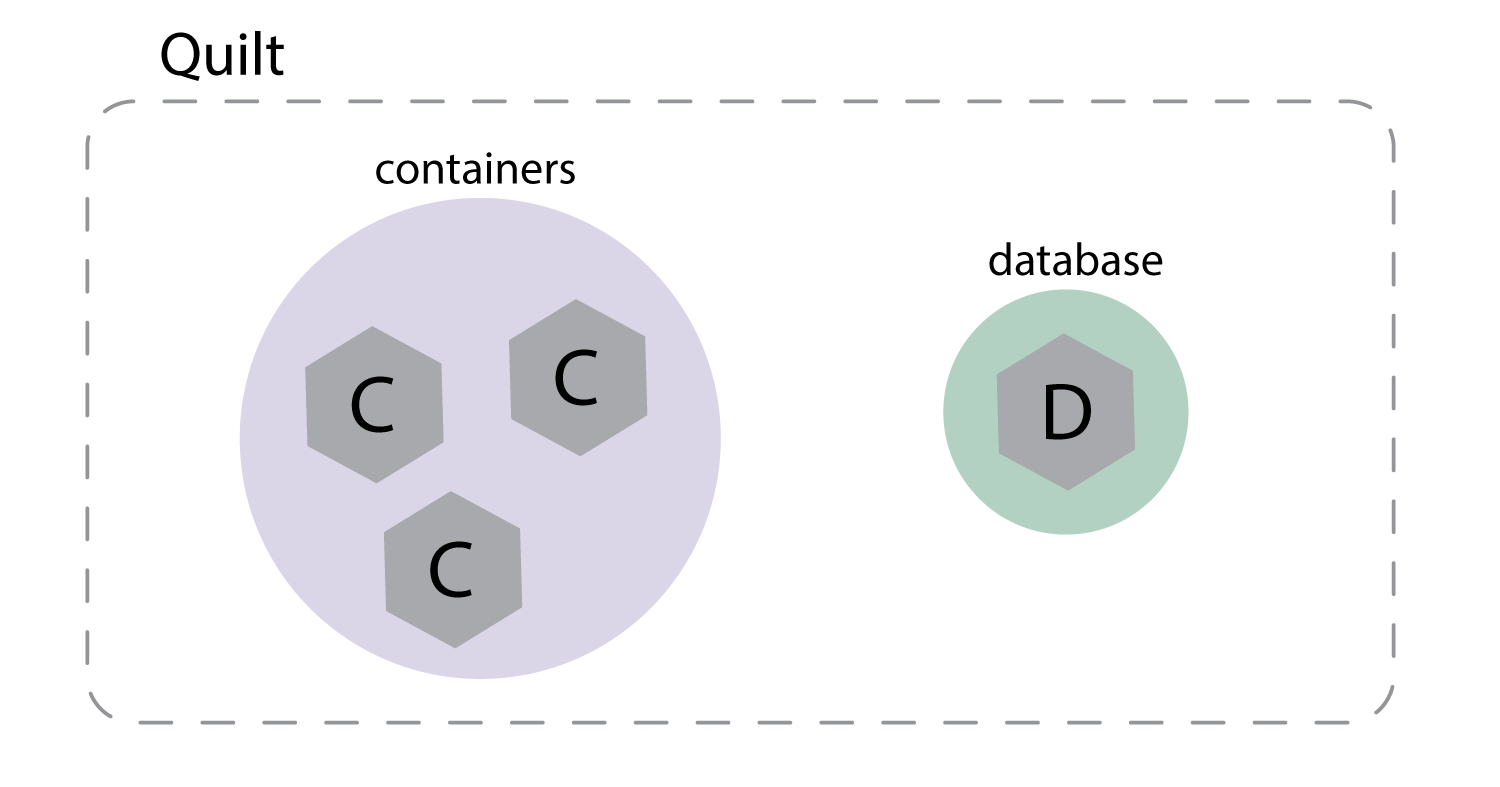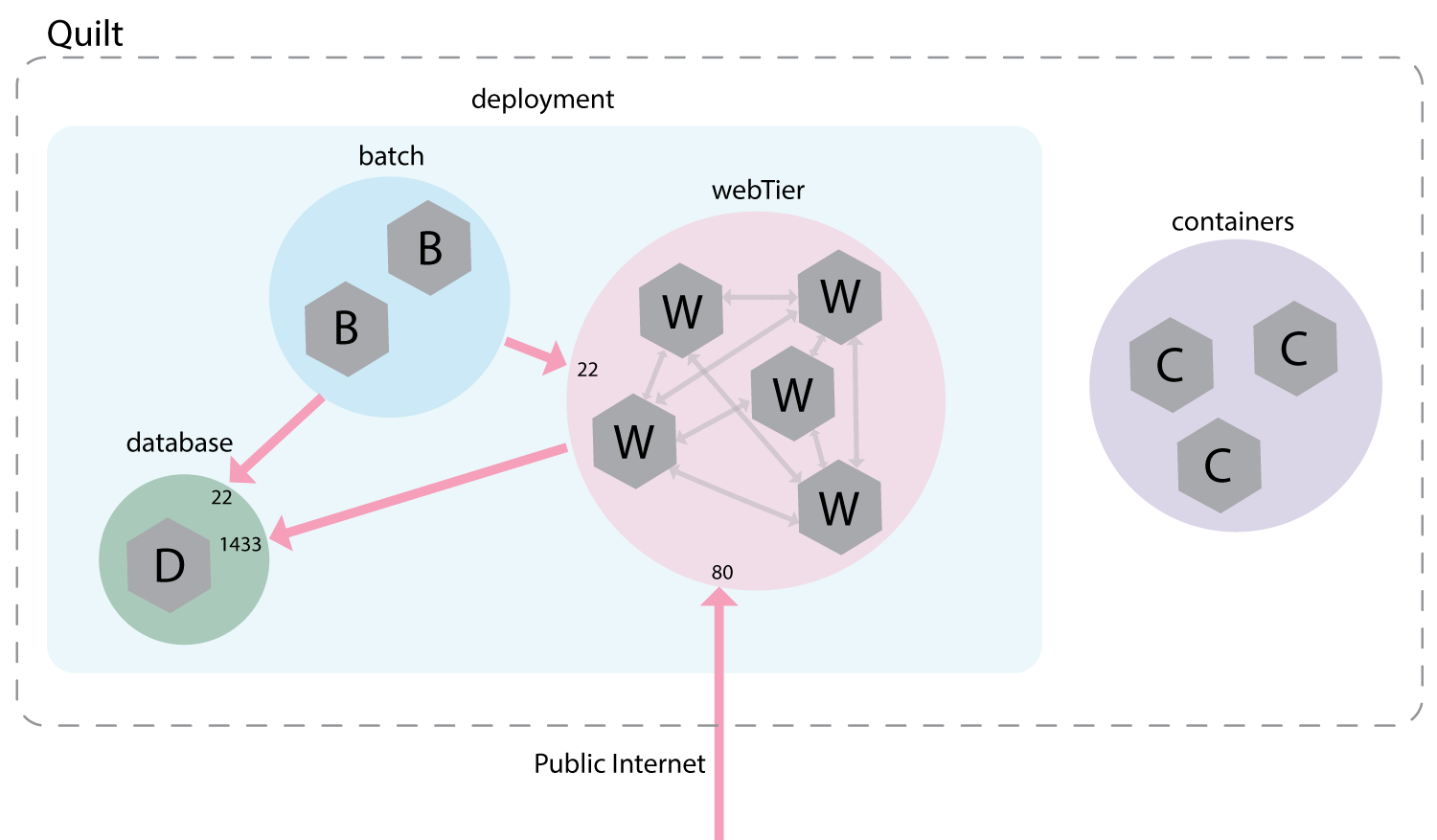Quilt aims to be the easiest way to deploy and network containers.
Traditional container orchestrators have a procedural API focused narrowly on compute. The network, usually an afterthought, must be managed by a separate system with its own independent API. This leaves operators with a complex task: write a deployment script that configures everything necessary to get their application up and running.
Quilt takes a different approach. It relies on a new domain specific language, Stitch, to specify distributed applications, independent of the specific infrastructure they run on. Given a stitch, Quilt can automatically deploy in a variety of environments: Amazon EC2, Microsoft Azure, and Google Compute Engine, with more coming soon. Furthermore it can do this with no setup -- just point Quilt at a stitch and it will take care of the rest: booting virtual machines, starting containers on those VMs, and ensuring they can communicate.
Quilt is currently in alpha and under heavy development. Please try it out! We are eager for feedback!
You can find setup instructions and a quick tutorial at GettingStarted.md.
Stitch is a domain specific language based on Scheme and has many of the tools one would expect: modules, functions, variables, arithmetic, etc. In addition, it has some primitives for describing an application -- the collection of containers that should be running, and precisely which are allowed to communicate.
To declare 3 docker containers with the latest Ubuntu image and a postgres database, one would use the following stitch:
(label "containers" (makeList 3 (docker "ubuntu")))
(label "database" (docker "postgres"))
This will produce a simple network:
Next, suppose we'd like to expand with a batch processing system and 5 Apache containers. By default containers can't communicate, so we will have to add some network connections.
// Create 5 Apache containers, and label them "webTier"
(label "webTier" (makeList 5 (docker "httpd")))
// Create 2 Spark containers, and label them "batch"
(label "batch" (makeList 2 (docker "spark")))
// A deployment consists of a database, a webTier, and a batch processing
(label "deployment" (list "database" "webTier" "batch"))
// Allow the public internet to connect to the webTier over port 80
(connect 80 "public" "webTier")
// Allow the webTier to connect to the database on port 1433
(connect 1433 "webTier" "database")
// Allow the batch processor to connect to the database on and the webTier via SSH
(connect 22 "batch" (list "webTier" "database"))
// Allow all containers in the webTier to connect to each other on any port
(connect (list 0 65535) "webTier" "webTier")
After the above commands, our application looks a lot more interesting:
With this stitch, Quilt can now boot the system. Furthermore, if the stitch is modified, Quilt will automatically adapt by adding or removing containers as necessary. You can learn the specifics of the Stitch language by reading Stitch.md.
If you are interested in contributing to Quilt, check out Contributing.md and Dev.md for development instructions, details about the code structure, and more.
Quilt is led by Ethan J. Jackson, a PhD student at the UC Berkeley NetSys lab. Feel free to direct questions, comments, and inquiries to his email at ejj@eecs.berkeley.edu. Additionally, numerous other contact methods may be found here.

